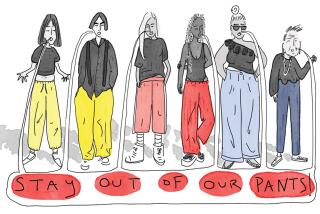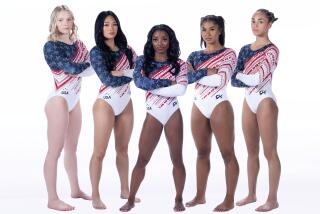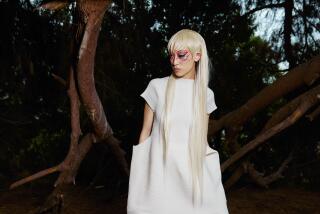It’s No High-Wire Act: If There’s One Piece That’s Versatile, It’s the Leotard
If we ever redesigned the flag of California, what would it look like? There would probably be symbols such as a margarita glass, a sailboat, the sun and a leotard.
The leotard has been a classic part of women’s fitness and athletic clothing for the past 50 years.
Crafted from cotton or a stretchy synthetic such as Lycra, it allows the body to move with little restraint. The traditional black is still popular, but one can choose from hundreds of other colors and patterns.
The leotard is a fashion basic whether worn with a blazer and slacks or by itself at the gym. That’s what makes it hard to believe it was originally designed for men.
In 19th-Century Europe, the circus was developing into the hottest tourist attraction of all time. Numerous companies traveled across the continent with exotic animals, clowns, magicians and, of course, trapeze artists. Jules Leotard was among the top trapeze masters of the era. His trademark aerial somersaults brought gasps from the hundreds crowded into the circus tent.
But what often brought more gasps was his uniform. In an effort to look sleek and aerodynamic, he made a sleeveless, tight-fitting garment to wear while flying through the air.
When he arrived in a town, the legend of his costume, which didn’t hide his anatomy, preceded him and helped the circus sell tickets. Leotard once told a newspaper that men who were looking for women should wear his outfit, “which does not hide your best features.”
His advice never caught on with men, but female trapeze artists began to wear a frilly versions of the leotard. From then on, the leotard was found only in the women’s departments. Except, of course, among male trapeze artists, who continued to wear Leotard’s uniform.
More to Read
Sign up for Essential California
The most important California stories and recommendations in your inbox every morning.
You may occasionally receive promotional content from the Los Angeles Times.










